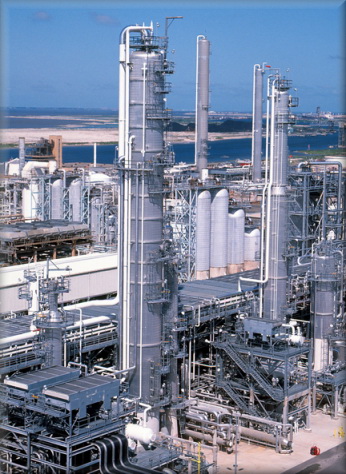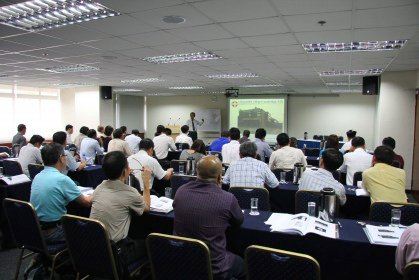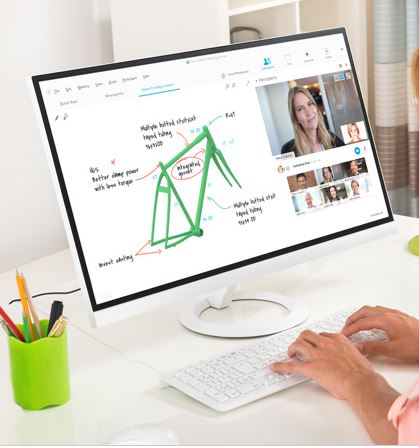|
Home | Consulting | Training | Expert Witness | Failure Analysis | Design Review | Corrosion Test | Corrosion Software | Protective Coatings | Materials Selection | Cathodic Protection | >>> | ||
|
API 579-1 / ASME FFS-1 (2021) Fitness-For-Service Assessments |
||
|
Course Outline | Who Should Attend | Registration | In-House | On-Demand | Online Courses | PPT Slides+Testbank |Course List | Why WebCorr |
||
| Course Overview | ||
|
This 5-day advanced course provides guidance for conducting FFS assessments in accordance with API 579-1/ASME FFS-1 (2021) standard using methodologies specifically prepared for pressurized equipment. The guidelines discussed in this course can be used to make run-repair-replace decisions to help determine if pressurized equipment containing flaws that have been identified by inspection can continue to operate safely for some period of time. These FFS assessments are currently recognized and referenced by the API Codes and Standards (510, 570, & 653), and by NB-23 as suitable means for evaluating the structural integrity of pressure vessels, piping systems and storage tanks where inspection has revealed degradation and flaws in the equipment.
The assessment procedures discussed in this course can be used for Fitness-For-Service assessments and/or rerating
of equipment designed and constructed to the following codes:
a) ASME B&PV Code, Section VIII, Division 1
This course is available for in-house
training, online and distance learning worldwide. It can also be customized to meet the
specific needs of your organization. |
||
|
||
|
1 INTRODUCTION
1.1 What is Fitness-for-Service Assessment?
2 FITNESS-FOR-SERVICE ENGINEERING ASSESSMENT PROCEDURE 2.1 General 2.2 Applicability and Limitations of the Fitness-for-Service Assessment Procedures 2.3 Data Requirements 2.4 Assessment Techniques and Acceptance Criteria 2.5 Remaining Life Assessment 2.6 Remediation 2.7 In-Service Monitoring
3 ASSESSMENT OF EXISTING EQUIPMENT FOR BRITTLE FRACTURE 3.1 General 3.2 Applicability and Limitations of the Procedure 3.3 Data Requirements 3.4 Assessment Techniques and Acceptance Criteria 3.5 Remaining Life Assessment – Acceptability for Continued Service 3.6 Remediation 3.7 In-Service Monitoring 3.8 Worked Examples: Step-by-Step Guide to the FFS Calculation Procedures for the Assessment of Brittle Fracture 3.9 Exercises
4 ASSESSMENT OF GENERAL METAL LOSS 4.1 General 4.2 Applicability and Limitations of the Procedure 4.3 Data Requirements 4.4 Assessment Techniques and Acceptance Criteria 4.5 Remaining Life Assessment 4.6 Remediation 4.7 In–Service Monitoring 4.8 Worked Examples: Step-by-Step Guide to the FFS Calculation Procedures for the Assessment of General Metal Loss 4.9 Exercises
5 ASSESSMENT OF LOCAL METAL LOSS 5.1 General 5.2 Applicability and Limitations of the Procedure 5.3 Data Requirements 5.4 Assessment Techniques and Acceptance Criteria 5.5 Remaining Life Assessment 5.6 Remediation 5.7 In-Service monitoring 5.8 Worked Examples: Step-by-Step Guide to the FFS Calculation Procedures for the Assessment of Local Metal Loss 5.9 Exercises
6 ASSESSMENT OF PITTING CORROSION 6.1 General 6.2 Applicability and Limitations of the Procedure 6.3 Data Requirements 6.4 Assessment Techniques and Acceptance Criteria 6.5 Remaining Life Assessment 6.6 Remediation 6.7 In Service Monitoring 6.8 Worked Examples: Step-by-Step Guide to the FFS Calculation Procedures for the Assessment of Pitting Corrosion 6.9 Exercises
7 ASSESSMENT OF HYDROGEN BLISTERS AND HYDROGEN DAMAGE ASSOCIATED WITH HIC AND SOHIC 7.1 General 7.2 Applicability and Limitations of the Procedure 7.3 Data Requirements 7.4 Assessment Techniques and Acceptance Criteria 7.5 Remaining Life Assessment 7.6 Remediation 7.7 In-Service Monitoring 7.8 Worked Examples: Step-by-Step Guide to
the FFS Calculation Procedures for 7.9 Exercises
8 ASSESSMENT OF WELD MISALIGNMENT AND SHELL DISTORTIONS 8.1 General 8.2 Applicability and Limitations of the Procedure 8.3 Data Requirements 8.4 Evaluation Techniques and Acceptance Criteria 8.5 Remaining Life Assessment 8.6 Remediation 8.7 In-Service Monitoring
8.8 Worked Examples: Step-by-Step Guide to the
FFS Calculation Procedures for 8.9 Exercises
9 ASSESSMENT OF CRACK-LIKE FLAWS 9.1 General 9.2 Applicability and Limitations of the Procedure 9.3 Data Requirements 9.4 Assessment Techniques and Acceptance Criteria 9.5 Remaining Life Assessment 9.6 Remediation 9.7 In-Service Monitoring 9.8 Worked Examples: Step-by-Step Guide to the FFS Calculation Procedures for the Assessment of Crack-like Flaws 9.9 Exercises
10 ASSESSMENT OF COMPONENTS OPERATING IN THE CREEP RANGE 10.1 General 10.2 Applicability and Limitations of the Procedure 10.3 Data Requirements 10.4 Assessment Techniques and Acceptance Criteria 10.5 Remaining Life Assessment 10.6 Remediation 10.7 In Service Monitoring 10.8 Worked Examples: Step-by-Step Guide to the FFS Calculation Procedures for the Assessment of Creep Damage 10.9 Exercises
11 ASSESSMENT OF FIRE DAMAGE 11.1 General 11.2 Applicability and Limitations of the Procedure 11.3 Data Requirements 11.4 Assessment Techniques and Acceptance Criteria 11.5 Remaining Life Assessment 11.6 Remediation 11.7 In-Service Monitoring 11.8 Worked Examples: Step-by-Step Guide to the FFS Calculation Procedures for the Assessment of Fire Damage 11.9 Exercises
12 ASSESSMENT OF DENTS, GOUGES, AND DENT-GOUGE COMBINATIONS 12.1 General 12.2 Applicability and Limitations of the Procedure 12.3 Data Requirements 12.4 Assessment Techniques and Acceptance Criteria 12.5 Remaining Life Assessment 12.6 Remediation 12.7 In-Service monitoring 12.8 Worked Examples: Step-by-Step Guide to the FFS Calculation Procedures for the Assessment of Dents and/or Gouges 12.9 Exercises
13 ASSESSMENT OF LAMINATIONS 13.1 General 13.2 Applicability and Limitations of the Procedure 13.3 Data Requirements 13.4 Assessment Techniques and Acceptance Criteria 13.5 Remaining Life Assessment 13.6 Remediation 13.7 In-Service Monitoring 13.8 Worked Examples: Step-by-Step Guide to the FFS Calculation Procedures for the Assessment of Laminations 13.9 Exercises
14
Assessment of Fatigue Damage
15 END OF COURSE EXAM
|
||
|
Course Outline |Who Should Attend |Registration |In-House |On-Demand |Online Courses |PPT Slides+Testbank |Course List |
||
|
Who Should Attend |
||
|
Designers, Inspection Engineers, Maintenance Engineers, Plant Inspectors, Mechanical Engineers, and Process Engineers interested in Fitness-for-Service assessments.
|
||
|
Click here to register for this corrosion course online Click here to download the course brochure in PDF format.
|
||
| In-House Training Corrosion Courses/On-Site Training Corrosion Courses | ||
|
There is no limit to the number of participants required for in-house training corrosion courses. We conduct the in-house training corrosion course at your company's premises worldwide, and at a time convenient to your company.
Click here to contact us for a quotation for in-house training corrosion courses. |
||
| Corrosion Course-On-Demand | ||
|
Click here to contact us for a quotation. |
||
| Online Corrosion Courses and Distance Learning Corrosion Courses | ||
|
Click here to to register an online corrosion short course. |
||
| Corrosion Course-On-Webex, Corrosion Course-on-Zoom | ||
|
Click here to contact us for a quotation.
|
||
|
PowerPoint Slides and Test Banks for Trainers, Instructors, Tutors, University Lecturers and Professors |
||
|
If you are involved in teaching or training, you may wish to purchase a complete set of the trainer's package for this training course. The trainer's package comes complete with ready-to-use PowerPoint slides (fully editable) and test bank (with answer keys). These ready-to-use PowerPoint slides contain high quality color photographs, illustrations, animations, audio and video clips. The test bank contains questions conveniently grouped into four categories: (1) true or false, (2) multiple choice, (3) calculation, and (4) reasoning and open-ended discussions. The trainer's package is suitable for in-house training and university teaching (30 lecture hours). This is exactly the same package that WebCorr uses to deliver our current training course. The one-time lump sum fee allows your organization to use the training package and also modify it. For example, your organization may modify the course contents and re-name/re-brand the course under your organization’s name. WebCorr only retains the copyright of the original PowerPoint slides and test banks.
Click here to contact us if you need more information on the trainer's package. |
||
|
Course Outline |Who Should Attend |Registration |In-House |On-Demand |Online Courses |PPT Slides+Testbank |Course List |
||
|
Copyright © 1995-2025.. All rights reserved. |
||
 The Fitness-For-Service (FFS) assessments are quantitative engineering evaluations that are performed to demonstrate the structural integrity of an in-service component that may contain a flaw or damage.
The Fitness-For-Service (FFS) assessments are quantitative engineering evaluations that are performed to demonstrate the structural integrity of an in-service component that may contain a flaw or damage. If you are concerned with corrosion in your
company, in-house training or on-site training is a great solution to train a group of
employees from design, production, operation, quality assurance, inspection
and maintenance, and technical sales and support on corrosion control and
corrosion prevention technology. The contents of all our corrosion courses can
be customized to fit your organization's needs.
If you are concerned with corrosion in your
company, in-house training or on-site training is a great solution to train a group of
employees from design, production, operation, quality assurance, inspection
and maintenance, and technical sales and support on corrosion control and
corrosion prevention technology. The contents of all our corrosion courses can
be customized to fit your organization's needs.
 All our publicly scheduled corrosion short courses are conducted once a year. However, you do not need to wait for one year if you have missed any of the publicly scheduled corrosion courses as we have this unique corrosion course-on-demand scheme: we will conduct the course just for you
(on an one-on-one basis) or for a small group from your company at a time and in a location convenient to you. This option costs significantly less than a full-scale in-house
or on-site corrosion training program.
All our publicly scheduled corrosion short courses are conducted once a year. However, you do not need to wait for one year if you have missed any of the publicly scheduled corrosion courses as we have this unique corrosion course-on-demand scheme: we will conduct the course just for you
(on an one-on-one basis) or for a small group from your company at a time and in a location convenient to you. This option costs significantly less than a full-scale in-house
or on-site corrosion training program. All
our corrosion short courses are available for online or offline distance
learning. You can start an online corrosion course at any time and learn
at your own comfortable pace and schedule, whenever and wherever you
are. You have around-the-clock access to the interactive and media-rich
course materials, virtual labs, course instructions and course assessments. Discussions and questions related to the corrosion courses
are posted on the website or exchanged through email for a period up to 3 months. Video conferencing or instant messaging can also be arranged for discussions of course topics.
For those who do not have ready access to internet, we can send
you our online course materials on a CD-ROM, or DVD, or USB flash drive for offline
distance learning.
All
our corrosion short courses are available for online or offline distance
learning. You can start an online corrosion course at any time and learn
at your own comfortable pace and schedule, whenever and wherever you
are. You have around-the-clock access to the interactive and media-rich
course materials, virtual labs, course instructions and course assessments. Discussions and questions related to the corrosion courses
are posted on the website or exchanged through email for a period up to 3 months. Video conferencing or instant messaging can also be arranged for discussions of course topics.
For those who do not have ready access to internet, we can send
you our online course materials on a CD-ROM, or DVD, or USB flash drive for offline
distance learning. Webex
is hosted by Cisco, a product purpose-built for real-time web
communications. If you are an existing user of Webex, or if you are
willing to experience the power of Webex, we can conduct the course for you
over Webex with audio and video presentations and interactions with the
course instructor and other course attendees in real-time. It is just like
the physical classroom settings that everyone can interact with each other.
Your questions will be answered in real time by our instructor. Corrosion
courses-on-Zoom, or MS Teams are also alavilable.
Webex
is hosted by Cisco, a product purpose-built for real-time web
communications. If you are an existing user of Webex, or if you are
willing to experience the power of Webex, we can conduct the course for you
over Webex with audio and video presentations and interactions with the
course instructor and other course attendees in real-time. It is just like
the physical classroom settings that everyone can interact with each other.
Your questions will be answered in real time by our instructor. Corrosion
courses-on-Zoom, or MS Teams are also alavilable.